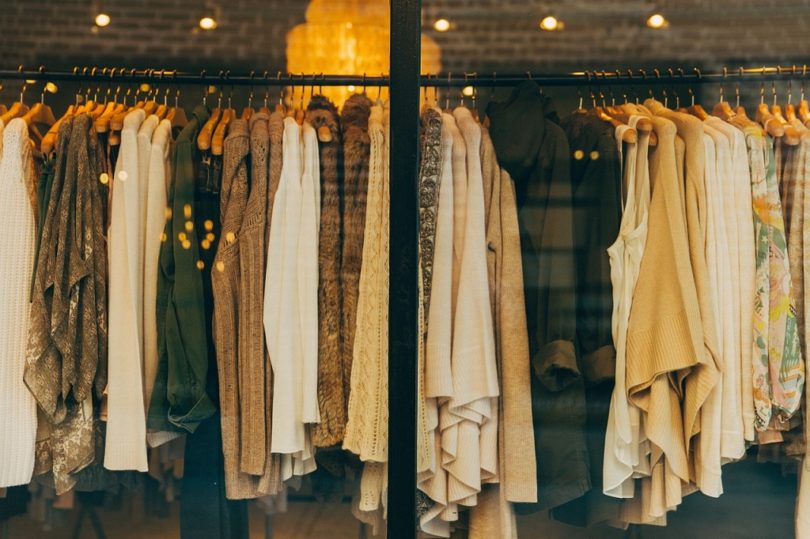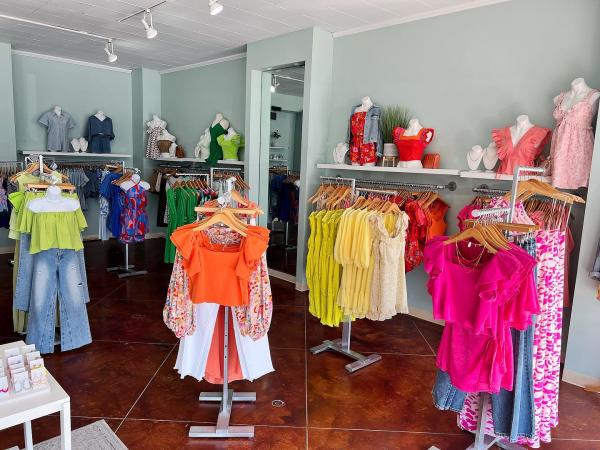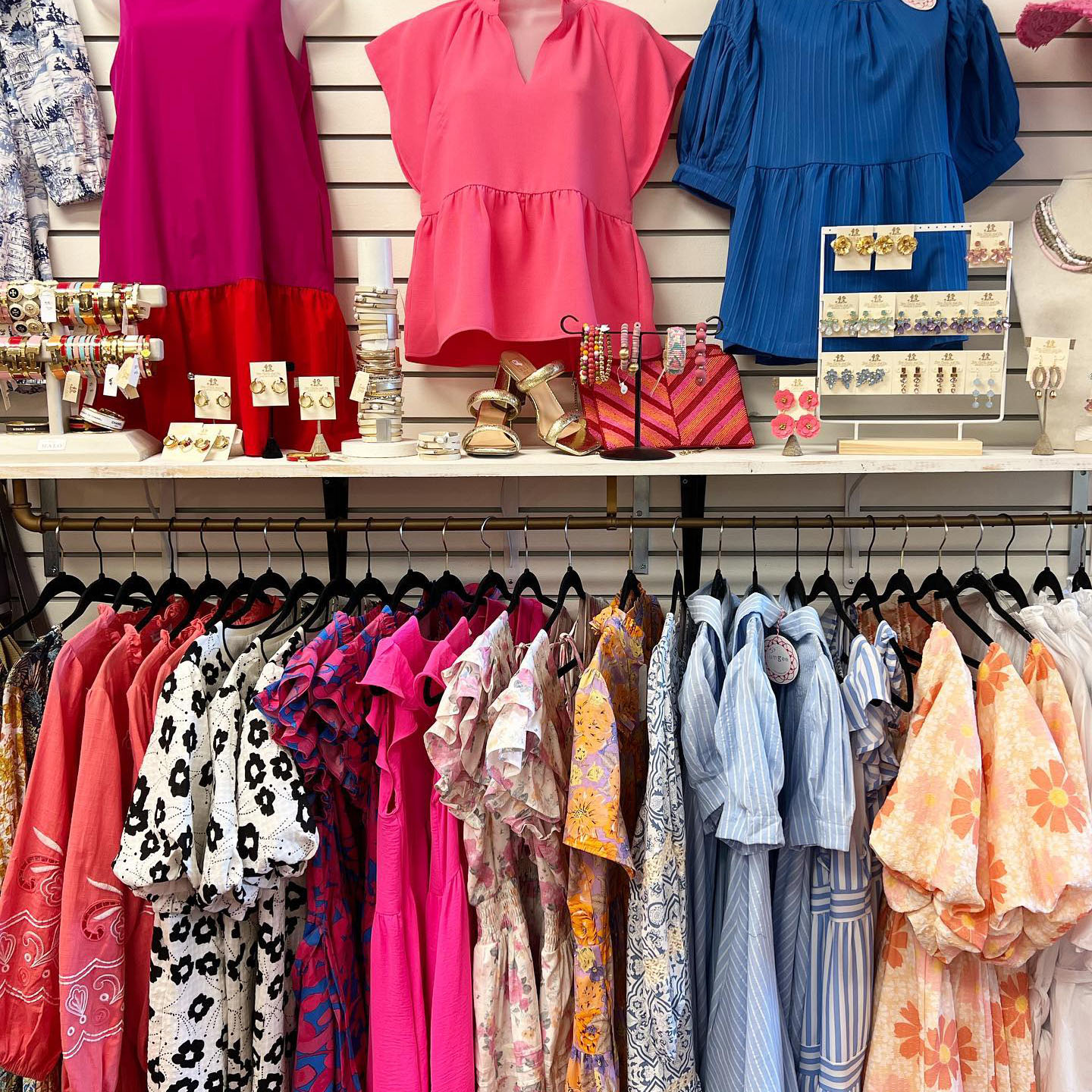How to Style Your Clothing with Boutique Fashion Discovers
Wiki Article
Discovering the Advancement and Impact of Garments on Modern Style Trends
The development of clothes has actually significantly influenced contemporary style fads, merging historic criteria with cutting-edge developments. Legendary figures like Coco Chanel and Yves Saint Laurent revolutionized the style industry by introducing ideas that focus on convenience and access, which proceed to resonate today.Historic Fashion Influencers
In the tapestry of fashion background, particular numbers have left an indelible mark, forming the trends and designs that specify whole periods. Coco Chanel, an advanced developer, redefined women's style by presenting comfy, sophisticated apparel that left from restrictive corsets. Her iconic Chanel match and little black outfit have come to be classic staples in closets worldwide. Christian Dior's post-war "New Look" in 1947, with its celebration of femininity via complete skirts and cinched waistlines, marked a return to luxury and has proceeded to influence developers.Elsa Schiaparelli is an additional crucial figure, renowned for her avant-garde styles that incorporated surrealist art, working together with Salvador Dalí to create wayward pieces that tested traditional aesthetics. Her ingenious use color and bold patterns reverberates in modern fashion. Yves Saint Laurent, meanwhile, equalized haute couture with prêt-à-porter collections, bringing path styles to the masses and establishing a precedent for contemporary ready-to-wear lines.
These visionaries, to name a few, not just revolutionized fashion in their times yet also set sustaining patterns that reverberate in today's style industry, offering a foundation upon which modern-day designers proceed to build and innovate. Their heritages emphasize the relevance of creativity and bold in style's ever-evolving narrative.
Technological Developments in Style
In the middle of the dynamic landscape of the fashion business, technical developments stand at the center of development, reshaping just how developers produce and consumers involve with fashion. The assimilation of 3D printing has actually changed layout processes, enabling designers to experiment with complex structures and sustainable products that were previously inconceivable. This technology facilitates rapid prototyping, minimizing waste and expediting manufacturing times.
Smart textiles, installing technology into textiles, are additionally transforming the sector. Technologies like temperature-regulating and self-cleaning fabrics provide improved capability and convenience. Wearable innovation, including features like physical fitness tracking and communication, adds a brand-new measurement to style, combining visual appeals with functionality.
Social Changes and Style
As technical advancements remain to improve the apparel industry, social changes are equally prominent, redefining style and consumer choices. In the last few years, the surge of social media sites systems has actually sped up the dissemination of global fashion trends, permitting varied cultural influences to exist together and merge. This digital interconnectivity has facilitated the rapid exchange of concepts, resulting in an extra comprehensive and eclectic analysis of style that reflects the complex nature of modern society.Social understanding and admiration have prompted developers to attract ideas from a more comprehensive range of ethnic and historic contexts, integrating typical themes with modern aesthetic appeals. This fusion has resulted in style that reverberates with a broader target market, advertising a feeling of identification and belonging throughout various demographics. In addition, the raising need for personalization has driven brand names to offer customizable choices, allowing customers to express uniqueness while mirroring their cultural heritage.
In addition, shifting social worths have influenced her response style, with inclusivity and diversity becoming central styles. The market has started to welcome versions and influencers of various physique, ethnicities, and sex identities, tough conventional beauty standards. This transformation highlights the power of cultural shifts in shaping the future of fashion, as style comes to be a much more genuine expression of personal and collective identification.
Sustainability and Modern Layout
While the style market continues to evolve, the important for sustainability has actually become significantly immediate, influencing modern style methods. The surge of slow fashion, which highlights high quality over amount, urges consumers to spend in ageless pieces rather than short-term patterns.Additionally, contemporary style is identified by its technology in minimizing waste and advertising circularity. Techniques such as zero-waste pattern cutting and 3D knitting are getting grip, allowing designers to develop garments with very little textile waste. Furthermore, brands are embracing transparent supply chains, guaranteeing accountability and fostering customer depend on. This method not only alleviates environmental impact yet likewise improves the social responsibility of style residences.

Future Trends in Fashion

Sustainability will certainly remain to be a driving pressure in shaping future style trends. The industry is increasingly taking on environment-friendly products and ethical production methods, replying to a growing customer demand for accountable techniques. Developments such as bio-fabricated products and closed-loop recycling systems are established to redefine just how garments is produced and consumed, lowering ecological impact while maintaining design and high quality.
Cultural changes, consisting of the increase of inclusivity and variety, will likewise play a critical role. As society comes to be much more familiar with social problems, style is anticipated to end up being a system for expression and modification. Designers will likely focus on producing collections that show a more comprehensive variety of experiences and identities, promoting representation and accessibility.
Conclusion
The evolution of apparel considerably affects contemporary fashion fads, where historic influences merge with contemporary designs. This recurring development underscores fashion's role as a mirror to social values and technological advancement, suggesting a future rich with development and inclusivity.The evolution of apparel has considerably influenced contemporary fashion trends, merging historic criteria with advanced developments.In the middle of the dynamic landscape of the fashion industry, technical great site developments stand at the leading edge of development, reshaping just how designers produce and customers involve with style.While the fashion sector continues to advance, the crucial for sustainability has actually become significantly immediate, affecting modern-day layout practices. As sustainability ends up being embedded in modern layout, it leads the method for a more liable and aware fashion market.
The advancement of clothing significantly impacts modern-day fashion fads, where historic impacts merge with modern layouts.
Report this wiki page